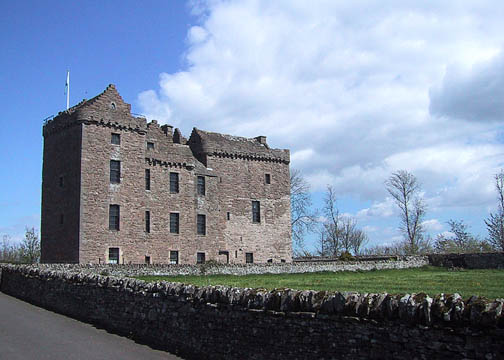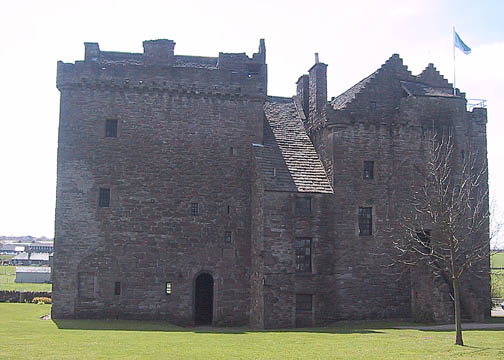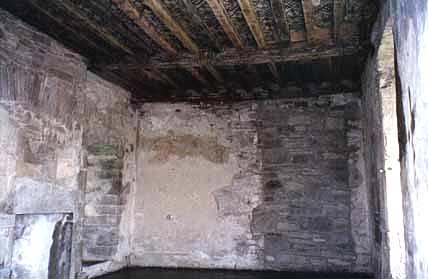 |
 |
| The oldest part of the
splendid castle of Huntingtower is a 15th century keep, to which was added a 16th century
tower house, and later a joining block, all still roofed. Mary visited the castle from 25 to 27 June 1565, and again with her second husband, Henry Stuart, Lord Darnley, from 16 to 17 September 1565 while on their honeymoon. The castle bore the name of "Ruthven Castle" since the Ruthvens had been established at Huntingtower as early as the twelfth century. In 1582 the 4th Lord Ruthven who had been made Earl of Gowrie in 1581, kidnapped the young James VI (Mary's son) and held him at Huntingtower for a year until he escaped during a hunting trip. The Earl was beheaded in 1585. The Ruthvens were forfeited for treason in 1600 after the "Gowrie Conspiracy", a plot to murder James VI, their name proscribed, and the castle renamed Huntingtower. Huntingtower then passed to the Murray Dukes of Atholl, but by the nineteenth century it was used to house labourers. It was put into state care in 1912. |
|
 |
 |
| The windows were inserted in the seventeenth century and the painted ceilings are still clearly visible. A colony of bats have now made their home within the walls of Huntingtower. The space between the two towers is known as "Maiden's Leap" after the leap which the daughter of the 1st Earl of Gowrie made from her lover's chamber in one of the towers to her own chamber in the other tower, when she feared to be discovered by her mother. The lovers eloped the following night. The castle is also said to be haunted by a green lady. | |
| Open all year except Thursdays pm and Fridays from October to March. Tel.: 44+ (0)1738 627231. | |